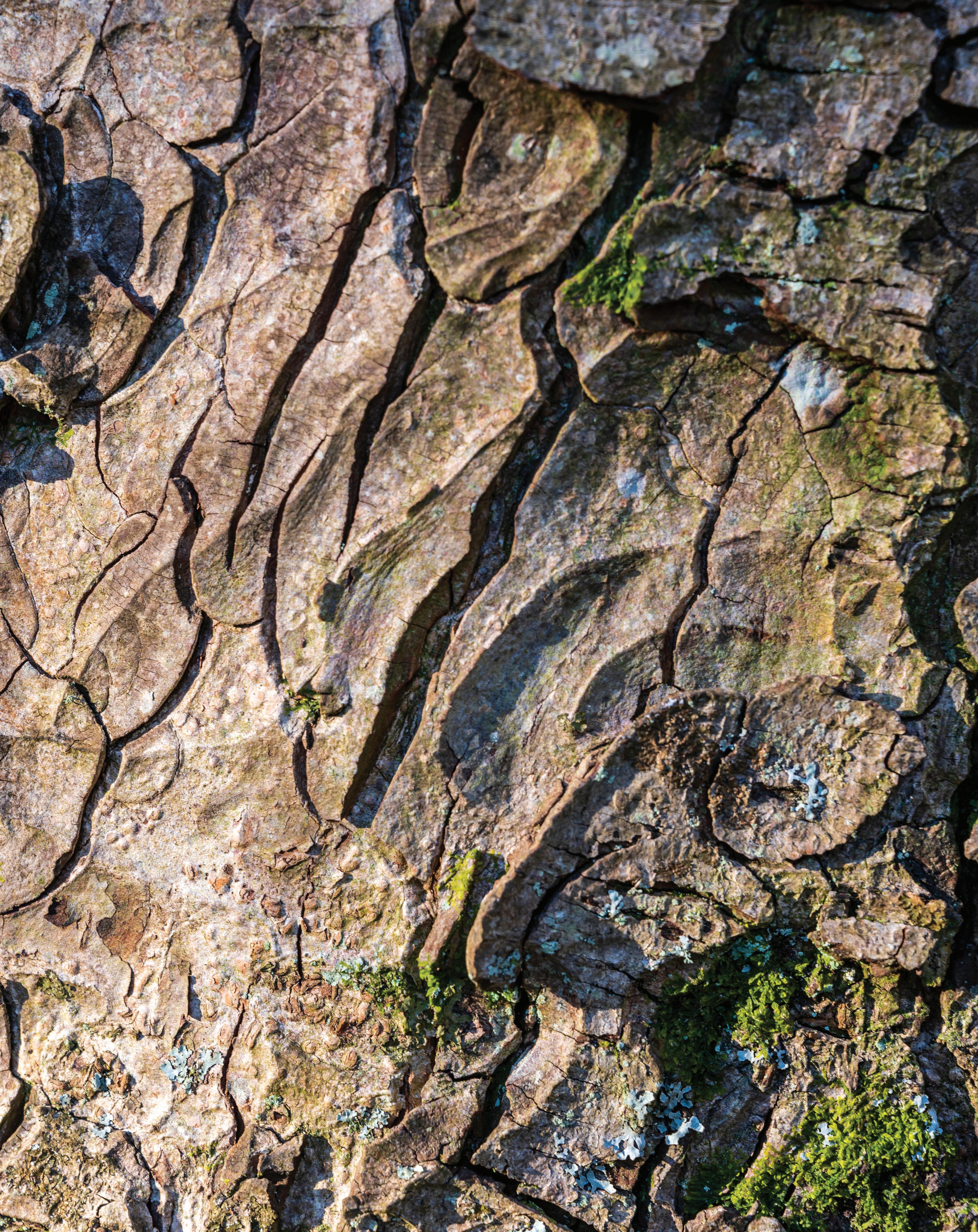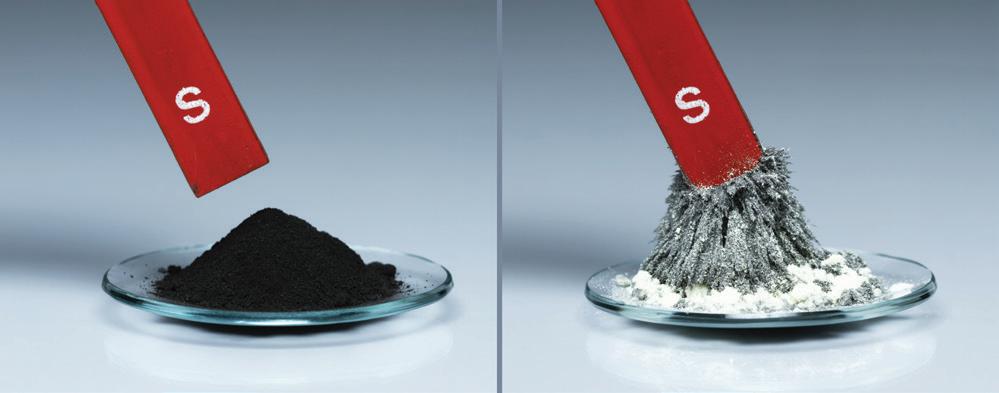Chemistry for the IB Diploma







Throughout this book, you will find lots of different features that will help your learning. These are explained below.
A unit is made up of a number of chapters. The key concepts for all the chapters covered in a unit are summarised in the Unit opening chapter as the introduction.
Each chapter in the book begins with a list of learning objectives. These set the scene for each chapter, help with navigation through the coursebook and indicate the important concepts in each topic. A bulleted list at the beginning of each section clearly shows the learning objectives for the section.
These are questions on subject knowledge you will need before starting each chapter.
These are a mix of questions and explanation that refer to other Chapters or sections of the book.
The content in this book is divided into Standard and Higher Level material. Either a chevron or a vertical line running down the margin of all Higher Level material, allows you to easily identify Higher Level from Standard material.
Key terms are highlighted in orange bold font at their first appearance in the book so you can immediately recognise them. At the end of the book, there is a glossary that defines all the key terms.
This feature contains important key learning points (facts) and/or equations to reinforce your understanding and engagement.
These short hints provide useful information that will help tackle the tasks in the exam.
This feature presents real-world examples and applications of the content in a chapter, encouraging you to look further into topics. You will note that some of these features end with questions intended to stimulate further thinking, prompting you to look at some of the benefits and problems of these applications.
Nature of Science is an overarching theme of the IB Chemistry Diploma course The theme examines the processes and concepts that are central to scientific endeavour, and how science serves and connects with the wider community. Throughout the book, there are ‘Nature of Science’ paragraphs that discuss particular concepts or discoveries from the point of view of one or more aspects of Nature of Science.
This section stimulates thought about critical thinking and how we can say we know what we claim to know. You will note that some of these features end with questions intended to get you thinking and discussing these important Theory of Knowledge issues.
Throughout this Chemistry for the IB Diploma course, the international mindedness feature highlights international concerns. Chemistry is a truly international endeavour, being practised across all continents, frequently in international or even global partnerships. Many problems that chemistry aims to solve are international and will require globally implemented solutions.
How to use this book
These questions appear within each chapter, to help you develop your understanding. The questions can be used as the basis for class discussions or homework assignments. If you can answer these questions, it means you have understood the important points of a section.
Many worked examples appear throughout the text to help you understand how to tackle different types of questions.
The questions appear at the end of each chapter. The purpose is for you as a learner to reflect on the development of your skills proficiency and your progress against the objectives. The reflection questions are intended to encourage your critical thinking and inquiry-based learning.
Exam-style questions at the end of each topic provide essential practice and self-assessment. These are signposted in the print coursebook and can be found in the digital version of the coursebook.
These appear at the end of each Chapter as a series of statements. You might find it helpful to rate how confident you are for each of these statements when you are revising. You should re-visit any topics that you rated ‘Needs more work’ or ‘Almost there’.
I can Section Needs more work Almost there Confident to move on
Additional material to support the Chemistry for the IB Diploma course is available online. This includes Assessment guidance – a dedicated chapter in the digital coursebook helps teachers and students unpack the new assessment and model exam specimen papers. Additionally, answers to the Test your understanding and Exam-style questions are also available. Visit Cambridge GO and register to access these resources at www.cambridge.org/GO.
We have all heard of atoms: the particles from which everything is made. Democritus and his teacher, Leucippus, fifth-century BCE Greek philosophers, are usually credited with first suggesting the idea of the atom as the smallest indivisible particle from which all matter is made, but the modern understanding of science in terms of atoms only really began in the 19th century with the work of John Dalton (1766–1844). An understanding of atoms and atomic structure is now regarded as fundamental to chemistry, but we usually talk about atomic theory, so does that mean that atoms may not really exist? We will not look specifically at the evidence for the existence of atoms, but does the fact that everything in this book and other scientific literature is explained by assuming the existence of atoms provide that evidence?
So, assuming that atomic theory is the best way of explaining the world around us, what do we know about atoms? Atoms are most definitely small – there are many more atoms in a drop of water than there are stars in the Milky Way, and there are probably more atoms in a glass of water than there are stars in the universe (although no one is sure how many stars there are in the universe). We know that there are different types of atoms, but how many are there? A simple answer would be as many as there are elements, but there are also isotopes, and which isotope we are talking about can make a big difference to the properties of the element and to the world – a country with a storage vault full of uranium-235 (which can be used for making nuclear weapons) will be viewed very differently by other governments from one with uranium-238!









• What are the differences between elements, compounds and mixtures?
• How can the components of a mixture be separated?
• How can kinetic molecular theory be used to explain the properties of solids, liquids and gases?
IntroductionThe song ‘Woodstock’, released in 1970, includes the words ‘we are stardust’ and, strangely enough, this is pretty much true. The lightest elements (mostly hydrogen and helium with some lithium) were formed in the immediate aftermath of the Big Bang, but the other elements that we, and everything around us, are made of were formed in stars. In this chapter, we will look at the distinction between elements, compounds and mixtures, explain their properties in terms of kinetic molecular theory and look at how to separate the components of mixtures. The distinction between elements, compounds and mixtures is fundamental to an understanding of chemistry and, although in subsequent chapters we will mention very little about mixtures, it is important to remember that most substances in everyday life are actually mixtures.
Elements are the primary constituents of matter. There are 118 elements that have been discovered so far, and these are shown in the periodic table. Of these, about 90 occur naturally in reasonable amounts, and the rest are present in only trace amounts or are artificially made. By far the most abundant element in the universe is hydrogen, followed by helium, but in the Earth’s crust oxygen is the most abundant and astatine is the least abundant. Astatine has no stable isotopes and scientists estimate that, at any one time, there is probably less than 30 g present in the whole of the Earth’s crust.
An element can be defined in different ways and, for the moment, we will define it in terms of its properties:
An element is a chemical substance that cannot be broken down into a simpler substance by chemical means.
Gold only contains gold atoms and sulfur only contains sulfur atoms, and because of this, these cannot be broken down into anything simpler than gold atoms or sulfur atoms using chemical reactions.
In Chapter 2, we will look at the structure of atoms, and this will allow us to define an element in terms of the particles that make up the atom:
An element is a pure substance in which each atom has the same number of protons in the nucleus (see Chapter 2).
So, for example, gold is an element and all samples of pure gold contain only atoms that have 79 protons in the nucleus.
The symbols for elements are shown in the periodic table (Chapter 10, section 10.1). In a sample of an element, the atoms may be present as individual atoms (e.g. helium, He), be chemically bonded as individual molecules (e.g. oxygen, O2, or ozone, O3) or be chemically bonded as part of a giant structure (e.g. gold, Au, or carbon, C). Some representations of elements are shown in Figure 1.1. The key thing to notice is that, in each part of Figure 1.1, all the atoms are the same.
a b c d
Figure 1.1: Some elements. a This could be a noble gas, such as helium, which consists of just individual atoms. b This could be gaseous oxygen, consisting of O2 molecules, in which the oxygen atoms are chemically bonded to each other. c This could be a metal, such as gold. d This could be carbon – the lines represent bonds between atoms.
What is an element?
The concept of an element is fundamental to the study of chemistry, but, strangely enough, chemists do not necessarily agree on the definition of an element. If we say that oxygen is an element, that is fine, but do we mean an O atom, a sample of oxygen gas, which contains O2 molecules, or even ozone, which contains O3 molecules?
Chemistry is partly a study of how chemical elements combine to make the world and the universe around us. When different elements combine chemically, they form compounds.
In water (H2O), a compound, there are always exactly twice as many hydrogen atoms as oxygen atoms – this ratio never varies for a particular compound. If the ratio is different, it is a different compound, for example, if the ratio is 1:1, the compound is hydrogen peroxide (H2O2) and not water.
A compound is a pure substance formed when two or more elements combine chemically in a fixed ratio.
The atoms (or ions) in a compound are chemically bonded to each other – this may be covalent bonding (see Chapter 7, section 7.1) or ionic bonding (see Chapter 6, section 6.1). Some representations of the structures of compounds are shown in Figure 1.2. Sometimes the chemical bonds (lines) will be shown (two of the structures of water) and sometimes not.
a b
HH O
Figure 1.2: Some representations of compounds. The key thing to notice here is that more than one type of atom is present in each structure. a Three different ways of showing the structure of water. b An ionic compound, such as sodium chloride.
The elements in a compound are chemically combined, and therefore, compounds can only be converted into their elements again by chemical reactions.
For example, hydrogen can be obtained from water by reacting it with sodium, or hydrogen and oxygen could both be produced by electrolysis (passing electricity through water).
The physical properties and chemical properties of a compound are different from those of the elements from which it is formed.
Chemical properties how a substance behaves in a chemical reaction.
Physical properties all the other properties of a substance, such as melting point, density, hardness and electrical conductivity.
For example, hydrogen an explosive gas, combines with oxygen, a highly reactive gas, to form water, which is a liquid at room temperature. Water reacts in very different ways to hydrogen and oxygen (it has different chemical properties) – you would not try to put a fire out with hydrogen or oxygen!
Similarly, when sodium (a highly reactive metal) is heated with chlorine (a toxic gas), a white, crystalline substance, sodium chloride (common salt), is formed, which reacts in very different ways to sodium and chlorine.
Elements and compounds are pure substances, but most things around us are not pure, they are mixtures. We breathe in air, which is a mixture; all the foods we eat are mixtures; oxygen is carried around our body by blood, another mixture.
The components of a mixture can be elements or compounds – or even mixtures! Air is a mixture of mostly elements (nitrogen, oxygen, argon) with smaller amounts of compounds (carbon dioxide, water vapour etc.).
Representations of mixtures are shown in Figure 1.3.
a b
Figure 1.3: Some mixtures. a A mixture of gases. b An alloy.
The components of a mixture are not chemically bonded together, so they retain their individual properties.
In a mixture of iron and sulfur, the two elements retain their individual chemical and physical properties, so iron is magnetic and will react with dilute acids to form hydrogen gas, and sulfur is yellow and burns in air to form sulfur dioxide. When the mixture is heated and forms the compound iron sulfide, this has a different appearance, is not magnetic (Figure 1.4) and, for example, reacts with acids to form the extremely smelly and toxic gas hydrogen sulfide – the compound has different properties to its elements.
chloride in 100 cm3 water, 10 g of sodium chloride in 100 cm3 of water etc., up to the limit of solubility (how much dissolves at a certain temperature).
Alloys are mixtures of metals with other metals (or non-metals). In alloys, there is metallic bonding throughout the structure (see Chapter 8, section 8.1), so the components of the mixture are actually chemically bonded to each other. An alloy is, however, still regarded as a mixture because it will not have a fixed composition –the metals can be mixed together in various proportions.
A homogeneous mixture has the same (uniform) composition throughout the mixture – it consists of only one phase.
Solutions and mixtures of gases are homogeneous mixtures.
A heterogeneous mixture does not have uniform composition – it consists of separate phases.
The components of a mixture can be mixed together in any proportion.
When atoms combine to form compounds, they do so in fixed ratios (according to the formula of the compound), but there are no such limitations on making a mixture, and iron and sulfur can be mixed together in absolutely any proportions. Solutions are mixtures, and a solution of sodium chloride could be made by dissolving 1 g of sodium chloride in 100 cm3 of water, 2 g of sodium

The term phase can be used in different ways in chemistry; here, it refers to a region that is the same throughout, in terms of chemical composition and physical properties. In a heterogeneous mixture, there will be distinct boundaries between different phases. An example of a homogeneous mixture is a solution. The concentration is the same throughout: if several 1cm3 samples of a solution of sodium chloride are taken from a beaker and evaporated separately to dryness, the same mass of solid sodium chloride will be recovered from each sample.
One example of a heterogeneous mixture is sand in a sample of water. Sand and water can be distinguished from each other – they are separate phases. Other examples include milk and orange juice. Orange juice is a complex mixture, containing an aqueous phase with various substances dissolved or suspended in it. Suspended material in orange juice includes cellulose, proteins, lipids and pectins. If you leave some freshly squeezed orange juice to stand, some parts will settle out, but will it become completely clear? Milk, as a colloid, is discussed in detail in the Science in Context section below.
Mixtures can be homogeneous or heterogeneous
Mixtures of solids are always heterogeneous mixtures. For example, a mixture of iron and sulfur is a heterogeneous mixture. Even though the mixture may have been made very carefully, so that there are the same masses of iron and sulfur in each cubic centimetre, the composition is not uniform because there are distinct particles of iron and sulfur (you may need to use a magnifying glass to see them), and each particle of iron and sulfur represents a different phase.
When looking at mixtures that are liquids or gases, if the mixture is clear, so that you can see through it, it is a homogeneous mixture; if it is cloudy/opaque, so that some/all of the light is scattered as it passes through it, then the mixture is heterogeneous.
Tea or coffee without milk are solutions. This is usually easier to see with tea, but, if you dilute your black coffee in a glass cup with some water, you will be able to see that, although it is coloured, it is clear, so that light passes through it without being scattered, and therefore, it is a solution and a homogeneous mixture (although, if you used a cafetiere or a not-very-good filter, you may still have a few coffee grounds in it, which would make it a heterogeneous mixture!). If you add sugar and stir it well, the sugar dissolves, and so, you still have a homogeneous mixture; however, if you add milk (Figure 1.5), your coffee goes cloudy – this is now a heterogeneous mixture. Milk is a type of mixture called a colloid (or colloidal system) and contains very small droplets of fat and solid protein particles dispersed throughout an aqueous phase. These particles scatter light (the Tyndall effect) and, therefore, white coffee is not clear but opaque.
To consider:
1 Other heterogeneous mixtures you will come across in a coffee shop include whipped cream, hot chocolate and muffins… can you think of any more?
2 How do the methods for separating homogeneous mixtures differ from methods for separating heterogeneous mixtures?
3 Is it possible to separate all the components from white coffee or doughnuts?

d vanadium e ammonia f air g hydrogen chloride h magnesium oxide. SAMPLE
2 Classify each of the diagrams shown as an element, compound or mixture:
a b cde
3 Classify each of the following as a heterogeneous or a homogeneous mixture:
The components of a mixture can be separated from each other by physical processes – physical processes are things like filtration and distillation, which do not involve chemical reactions.
In a chemistry laboratory, filtration is usually used to separate an insoluble solid from a liquid. It can also be used to separate a solid from a gas. The apparatus most often used for filtration is shown in Figure 1.6. The solid left in the filter paper is called the residue, and the liquid that passes through the filter paper is called the filtrate. The filter paper acts as a physical barrier to the pieces of solid but allows the liquid to pass through gaps between fibres.
filter paper residue filtrate
filter funnel
Figure 1.6: Filtration can be used to separate a solid from a liquid.
Filtration is used as part of the process in the preparation of copper(II) sulfate. Copper(II) sulfate solution can be made by the reaction between copper(II) oxide (a black solid that is insoluble in water) and dilute sulfuric acid. Excess (more than enough to react with all the sulfuric acid) copper(II) oxide is added to hot sulfuric acid. The excess copper(II) oxide is then filtered off. In this case, copper(II) oxide is the residue and copper(II) sulfate solution is the filtrate.
The particulate nature of matter
a a mixture of carbon dioxide gas and helium gas b a mixture of solid copper(II) oxide and solid calcium carbonate c potassium hydroxide solution d mayonnaise.
The equation for the reaction is CuOs() + H 2SO 4 aq () → CuSO 4 aq () + H 2 Ol() CuOs() + H 2SO 4 aq () → CuSO 4 aq () + H 2 Ol()
Copper(II) oxide is a base and reacts with sulfuric acid in a neutralisation reaction (Chapter 19).
Diesel engines are used extensively in heavy-duty commercial vehicles, such as lorries and buses, as well as cars. One of the major environmental concerns with the use of vehicles with diesel engines is that they emit significantly more particulate matter (soot) than gasoline (petrol) engines, and this can be damaging to health. Diesel engines are, therefore, fitted with particulate filters, to filter out as much of the particulate matter as possible. Different countries have different regulations on emissions from diesel vehicles.
Evaporation can be used to remove a solvent from a solution to leave the solute. If a solution of sodium chloride is heated, water will evaporate/boil off to leave solid sodium chloride (Figure 1.7).
solution evaporating dish

This technique is called solvent extraction, and we talk about a solute partitioning itself between two solvents.
aqueous layer (less caffeine) dichloromethane layer (more caffeine)
Figure 1.7: Evaporation of the solvent can be used to obtain a solute from a solution. If larger crystals are required, only some of the water should be boiled off and then the solution should be left to crystallise.







Solvation can be used to separate a mixture of two or more substances, due to differences in solubility.
For example, a mixture of solid copper(II) oxide (insoluble in water) and sodium chloride (soluble in water) can be separated by putting the mixture into a beaker of warm distilled/deionised water and stirring to make sure that all the sodium chloride has dissolved. The mixture is filtered: copper(II) oxide is the residue and sodium chloride solution is the filtrate. Copper(II) oxide is washed with distilled water to remove any traces of sodium chloride solution and then dried in a warm oven (distilled water will evaporate). Solid sodium chloride can be obtained from the solution by heating it in an evaporating dish until all the water evaporates.
Note that distilled/deionised water must be used because tap water contains dissolved solids and, when heated, will leave a residue of these solids, so that the copper(II) oxide and sodium chloride obtained will not be pure.
A common laboratory experiment is the extraction of caffeine from tea. The basic principles of the technique are that tea leaves are boiled with water to make an aqueous solution, which is shaken with dichloromethane (an organic liquid with the formula CH2Cl2) in a separatory funnel (Figure 1.8). Dichloromethane is not soluble in water and remains as a separate phase in the separatory funnel. Caffeine is more soluble in dichloromethane than in water and distributes itself between the water layer and the dichloromethane layer, with much more in the dichloromethane layer. The dichloromethane layer can then be run off and the solvent evaporated to leave caffeine (a white solid).
Figure 1.8: A separatory funnel is used in the extraction of caffeine from tea.
Caffeine is more soluble in dichloromethane than in water. A general rule for solubility is ‘like dissolves like’. The intermolecular forces are more similar between caffeine (dipole–dipole interactions) and dichloromethane (dipole–dipole interactions) than between caffeine (dipole–dipole interactions) and water (hydrogen bonds). Intermolecular forces will be discussed in Chapter 7.
The word solvation is used here because it is used on the IB syllabus, but it is not actually the correct word. Solvation will be discussed further in Chapter 7. The process here is probably best described as dissolving.

Distillation could be used, for example, to separate water from a sodium chloride solution. The sodium chloride solution is heated, water evaporates and condenses again in the condenser, so that it can be collected in the collection vessel (it is called the distillate). Suitable apparatus for distillation is shown in Figure 1.9. If heating is continued for a long enough time, only solid sodium chloride will be left in the round-bottomed flask, and all the water will be in the collection vessel. The difference between distillation and evaporation is that, in distillation, the solvent is boiled off, but then condensed again, so that it can be collected. So, evaporation would generally be used when it is the solute that is the desired product and distillation when it is the solvent that is required.
water out heat
Figure 1.9: The experimental set-up for distillation.
Distillation (simple distillation) can be used to separate the solute and solvent from a solution (where the solute was a solid) or to separate a mixture of two liquids with sufficiently different boiling points.
condenser
water in solution (e.g. sodium chloride solution)
distillate
Seawater is a mixture, and distillation can be used to obtain water without salt from seawater. The process of removing salt from seawater is called desalination. Desalination is very important in some parts of the world, where sufficient freshwater is not available, ‘for example, in parts of Southwest Asia and North Africa. Water obtained by desalination can be used for human consumption, agriculture or in industry.
Distillation can also be used to separate a mixture of two liquids, as long as there is a large enough difference between their boiling points (about 70 °C).
The liquid with the lower boiling point (more volatile) will go into the vapour phase more easily and will be collected in the collection vessel (Figure 1.9), whereas the liquid with the higher boiling point will be left in the round-bottomed flask. If the boiling points of the two liquids are too close, then complete separation will not be obtained, and a mixture will distil over.
This technique is used extensively in organic chemistry for extracting the more volatile liquid product of a reaction from the reaction mixture and for purifying a liquid product of a reaction. When used for purification, the pure liquid is collected in the collection vessel, and any non-volatile impurities will be left in the round-bottomed flask. The purity of the liquid could be tested by using chromatography (see the Paper chromatography section below).
pencil line spot of mixture
closed container chromatography paper components of mixture solvent
closed container
solvent front
At the simplest level, the number of spots present on a chromatogram indicates the number of components of the mixture (although other tests might need to be done, to check whether a particular spot is indeed a pure substance).
Chromatography can be used to test the purity of the product of a reaction. The presence of more than one spot indicates that the substance is impure.
pencil line
Paper chromatography may be used, for example, to separate the various dyes in coloured inks, to separate a mixture of sugars or amino acids or to test the purity of a substance. The experimental set-up for paper chromatography is shown in Figure 1.10. solvent
Figure 1.10: A paper chromatography experiment. The process of the solvent travelling up the paper to produce a chromatogram is called development.
To carry out a paper chromatography experiment:
• A line is drawn with a pencil (not a pen, as the inks may move with the solvent) across a piece of chromatography paper about 1 cm from the bottom.
• A sample of the mixture is placed on the pencil line and allowed to dry.
• The paper is suspended in a container with a small amount of solvent at the bottom, so that the end of the paper dips into the solvent (the original sample spot must be above the top of the solvent; otherwise it will just dissolve into the solvent).
• The container is closed, so that the atmosphere becomes saturated with the solvent – this prevents evaporation of the solvent from the surface of the paper.
• The solvent is drawn up the paper by capillary action.
• The process is stopped when the solvent front is about 1 cm from the top of the paper. A pencil line is drawn to record the position of the solvent front and the paper is dried.
It can take quite a bit of research and trial and error to find a suitable solvent for chromatography that provides good separation of the components of the mixture. The polarity (see Chapter 7) of the substances influences the choice of solvent, but there are also other factors involved. The solvent does not have to be a pure liquid, and very often mixtures are used.
All chromatography techniques involve a stationary phase and a mobile phase. The components in a mixture are separated because of their differences in affinity for the stationary and mobile phases. This is explained in Chapter 7.
If the substances to be separated are colourless (e.g. amino acids or sugars), then some method must be used to locate the spots on the paper or TLC plate. The spots may be located using a locating agent. Amino acids, which are colourless, may be located by spraying with ninhydrin, which makes them show up as pink or purple spots. Other methods that are useful for organic solutes are exposing the paper or plate to iodine vapour (the spots become brown) or spraying the plate with concentrated sulfuric acid then heating it (the spots appear as brown–black). Spots may also often be located by the use of an ultraviolet lamp, as some substances fluoresce under ultraviolet light.
The particulate nature of matter
4 Select a technique that could be used to separate the components of the following mixtures:
a sand from water
b potassium chloride from a potassium chloride solution
c different indicators in universal indicator solution
d a mixture of ethoxyethane (CH3CH2OCH2CH3, boiling point 34 °C) and 1-(hexyloxy)hexane (CH3(CH2)5O(CH2)5CH3, boiling point 220 °C).
5 Explain how you would separate a mixture of potassium bromide (soluble in water) and calcium carbonate (insoluble in water).
6 Explain how you would separate iodine from an aqueous iodine solution, given that iodine is much more soluble in hexane than in water, and hexane is immiscible with water. Immiscible means that hexane and water do not mix – they form separate layers.
Kinetic molecular theory (often just called kinetic theory) is a model that was developed originally to explain the properties of gases, but it is usually also extended to describe liquids and solids. Within this model, we describe all matter as being made up of individual particles that are in constant motion (hence, the word ‘kinetic’).
Models are used throughout science. A model is a way of making sense of the world around us. Models may either be qualitative, as here, or quantitative (involving numbers and equations). The validity of a particular model can be tested by looking at how closely predictions made using the model agree with experimental observations.
The three states of matter most commonly encountered are solid, liquid and gas, and these differ in terms of the arrangement and movement of particles. The particles making up a substance may be individual atoms or molecules or ions. Simple diagrams of the three states of matter are shown in Figure 1.11, in which the individual particles are represented by spheres.
solid liquid gas
Figure 1.11: The three states of matter.
In diagrams showing the states of matter, remember the following:
• Solid: the particles should be arranged regularly and touching.
• Liquid: the particles are arranged randomly but still mostly touching.
• Gas: the particles are arranged randomly and are shown far apart.
Solid: the particles are generally regularly arranged and, due to relatively strong forces of attraction between them, are only able to vibrate about mean positions. As the forces between the particles are relatively strong, solids have fixed shapes.
Liquid: the particles have weaker forces between them, and so are able to move around each other. As the forces between the particles are weaker than those in solids, liquids take the shape of the container they are in. There are, however, still forces between the particles, so they stay together and do not fill the container.
Gas: the particles are assumed to have no forces between them (see Chapter 5) and move around randomly in all directions. There are no forces between the particles, so they are free to move around anywhere in a container, and thus, ‘fill’ the container. To give you some idea of how quickly the particles in a gas are moving: the average speed
of molecules in air (mostly nitrogen and oxygen) at 25 °C and atmospheric pressure is almost 500 ms 1; the particles collide, on average, every 150 ps (1.5 × 10−10 s) and only travel about 7 × 10 8 m between collisions. The properties of the three states of matter are summarised in Table 1.1.
Distance between particles close together close but further apart than in solids far apart Arrangement regularrandom random
Shape fixed shapeno fixed shape; take the shape of the container no fixed shape; fill the container
Volume fixed fixed not fixed Movement vibratemove around each other move around in all directions Speed of movement slowestfaster fastest Energy lowesthigher highest Forces of attraction strongestweaker weakest
Table 1.1: Properties of the three states of matter.
There are two temperature scales that are used commonly in everyday life: the Fahrenheit scale (melting point of ice = 32 °F and boiling point of water = 212 °F), which is used predominantly in the USA and a few other countries, and the Celsius or centigrade scale (melting point of ice = 0 °C and boiling point of water = 100 °C), which is used in the rest of the world. In science, however, we much more commonly use the absolute, or Kelvin, scale of temperature. For calculations involving temperatures in science, it is usually essential to use temperatures in kelvin.
The kelvin is the SI unit of temperature.
SI stands for Système International and is the internationally accepted system of units used in science. Within the SI, seven base units are defined by reference to seven fundamental constants (such as the speed of light in a vacuum and the Planck constant), which have agreed specific values. Other SI base units include the second, the metre and the mole.
The absolute, or Kelvin, scale of temperature starts at absolute zero, which is the lowest temperature possible. All molecular motion does not actually stop at absolute zero (this would contravene the Heisenberg uncertainty principle), but it is the temperature at which everything would be in its lowest energy state. It is not possible to actually reach absolute zero, but scientists have managed to get very close – below one nanokelvin!
Absolute zero the lowest temperature possible, corresponds to 0 K or 273.15 °C (usually taken as 273 °C).
A change of 1 °C is the same as a change of 1 K.
A temperature change in °C is the same as one in K.
The particulate nature of matter
nitrogen boiling point absolute zero water (ice) melting point
water boiling point ammonia melting point –273–196–760100
077195273373 temperature in K temperature in °C
Figure 1.12 Some temperatures in K and °C.
Figure 1.12 compares some temperatures in K and °C. The fact that a change of 1 °C is the same as a change of 1 K makes it quite straightforward to convert temperatures between the two scales.
To convert °C into K, add 273.
To convert K into °C, subtract 273.
WORKED EXAMPLE 1.1
Convert a temperature of 25 °C into kelvin. Answer To do this, we add 273 to the temperature in °C: 25 + 273 = 298 K
WORKED EXAMPLE 1.2
Convert a temperature of 350 K into °C.
Answer
To do this, subtract 273 from the temperature in K: 350 273 = 77 °C
Temperature is a measure of the average (mean) kinetic energy (Ek) of the particles in a substance.
• The higher the temperature, the higher the average kinetic energy of the particles.
The particles in gases and liquids are constantly colliding and, therefore, the particles will not all be moving at the same speed, and there will be a spread of kinetic energies for the particles, which is why we use the term average kinetic energy. The distribution of kinetic energies in a sample of gas at two different temperatures is shown in Figure 1.13. At higher temperature, there are fewer particles with lower kinetic energy and more particles with higher kinetic energy, and so, the average kinetic energy of the particles is greater. This will be explored in Chapter 17.
lower temperature 0 0
higher temperature
Kinetic energy
Figure 1.13: The distribution of kinetic energies in a sample of gas is called the Maxwell–Boltzmann distribution.
If two gases are at the same temperature, their particles will have the same average kinetic energy. This does not mean that the average speed of the particles is the same. Kinetic energy is calculated using the following equation: E k = 1 2 mv 2 where m is the mass of the particle and v is the speed. This means that, the lighter the particles, the higher the average speed at a particular temperature. The average speed of carbon dioxide molecules (relative mass 44.01) at 25 °C is about 380 m s−1, whereas the average speed of hydrogen molecules (relative mass 2.02) is about 1770 m s−1.
7 Convert each of the following temperatures in °C to temperatures in K. a 25 °C b 500 °C c 100 °C d 145 °C
CONTINUED
8 Convert each of the following temperatures in K to temperatures in °C. a 323 K b 100 K c 50 K d 500 K
9 What is wrong with the temperatures 50 K and 300 °C?
When one state of matter becomes another state of matter, we describe this as a change of state. Changes of state are summarised in Figure 1.14. Converting one state of matter into another usually involves heating (the change of state is an endothermic process) or cooling the substance (the change of state is an exothermic process) but can also be achieved by changing pressure. Endothermic and exothermic processes will be considered in Chapter 12.
heating – energy is supplied particles gain energy
A substance will be:
• a solid if the temperature is below its melting point
• a liquid if the temperature is between its melting point and its boiling point
• a gas if the temperature is above its boiling point
So, for example, bromine melts at 7.2 °C and boils at 58.8 °C; therefore, below 7.2 °C bromine will be a solid, between 7.2 °C and 58.8 °C it will be a liquid, and above 58.8 °C it will be a gas. There is no universally accepted definition of ‘room temperature’, but it is often taken as 25 °C, and so bromine is one of only two elements that is a liquid at room temperature.
Boiling and evaporation both involve a change in state from liquid to gas, but they are not the same thing –boiling only occurs at a certain temperature (the boiling point), but evaporation of the liquid can occur at any temperature between the melting and boiling points.
State symbols are used in chemical equations to indicate the physical state that the substances are in.
sublimation boiling evaporating condensing
deposition solid liquid gas melting freezing
cooling – energy taken out particles lose energy
Figure 1.14: Changes of state. Note that evaporation can occur at any temperature, but boiling occurs at a fixed temperature.
Sublimation is the change of state when a substance goes directly from the solid state to the gaseous state, without going through the liquid state. Both iodine and solid carbon dioxide (dry ice) sublime at atmospheric pressure. The reverse process is called deposition. The temperatures at which a substance changes state are called its melting point (change from solid to liquid) and boiling point (change from liquid to gas).
The state symbols are: (s) = solid (l) = liquid (g) = gas (aq) = aqueous (dissolved in water)
We saw the following chemical equation in the previous section on Filtration CuOs() + H 2SO 4 aq () → CuSO 4 aq () + H 2 Ol()
This indicates that solid copper(II) oxide (CuO) reacts with sulfuric acid, which is an aqueous solution (dissolved in water) to form an aqueous solution of copper(II) sulfate and liquid water.
Changes of state may be described using equations including state symbols, for example:
Melting of ice to form water: H 2 Os() → H 2 Ol()
Boiling/evaporation of liquid bromine: Br2 l () → Br2 g ()
Sublimation of iodine: I 2 s () → I 2 g ()
How to write balanced chemical equations will be discussed in Chapter 16.
If a pure substance is heated slowly, from below its melting point to above its boiling point, a graph of temperature against time can be obtained (Figure 1.15).
10 20 30 40 50 60 70 80 90 100
1 The particulate nature of matter
The average kinetic energy of the particles increases, until the boiling point of the liquid is reached. At this point (80 °C), the continued supply of heat energy is used to overcome the forces of attraction between the particles completely and the temperature of the substance remains constant, until all the liquid has been converted into gas. The continued supply of heat energy then increases the average kinetic energy of the particles and, therefore, the temperature of the gas. The particles move around faster and faster, as the temperature of the gas increases.
boiling point = 80 °C solid
Temperature / °C 5 10
melting point = 50 °C
melting liquid and solid present
boiling gas 15 20 25 30 35
liquid and gas present liquid
10 State the names of the following changes of state: a from solid to liquid b from solid to gas c from gas to liquid d from gas to solid.
11 Use data in the table to determine whether each of the elements will be a solid, liquid or gas at the specified temperature:
Time/minutes 0 0
Figure 1.15: A heating curve showing changes of state.
As a solid is heated, its particles vibrate more violently. The particles gain kinetic energy and the temperature of the solid rises. At 50 °C, the solid in Figure 1.15 begins to melt – at this stage, there is solid and liquid present together, and the temperature remains constant until all the solid has melted. All the heat energy being supplied is used to partially overcome the forces of attraction between particles, so that they can move around each other. Another way of saying this is that, at the melting point, all the heat energy being supplied goes into increasing the potential energy of the substance (overcoming forces between particles) and not to increasing the kinetic energy, so the temperature does not change.
When all the solid has melted, the continued supply of heat energy causes the kinetic energy of the particles to increase, so that the particles in the liquid move around each other more quickly and the temperature increases.
Substance Melting point / °C Boiling point / °C
Magnesium 650 1090 Fluorine 220 188 Polonium254 962 Mercury 39 357 a magnesium at 100 °C b fluorine at 200 °C c polonium at 1000 °C d mercury at 25 °C.
Think about the topics covered in this chapter. Which parts are you most confident with? Which topics require some extra practice?
I can... Section Needs more work Nearly there Confident to move on explain the terms element, compound and mixture, and distinguish between them 1.1 explain the difference between heterogeneous and homogeneous mixtures and give examples of each 1.1 explain the different methods for separating the components of a mixture and suggest a suitable method for separating a particular mixture 1.1 explain the properties of solids, liquids and gases in terms of kinetic molecular theory 1.2 state the relationship between temperature in K and the average kinetic energy of particles 1.3 convert temperatures between K and °C 1.3 use state symbols in chemical equations 1.4 explain changes of state in terms of kinetic molecular theory. 1.4
To what extent do you feel that you have met many of the ideas in this chapter before? Can you highlight specific areas that are new to you? Are you confident with these areas? Can you use your knowledge to identify heterogeneous and homogeneous mixtures around your home or school? Do you think that you could explain the difference between elements, compounds and mixtures to another student?